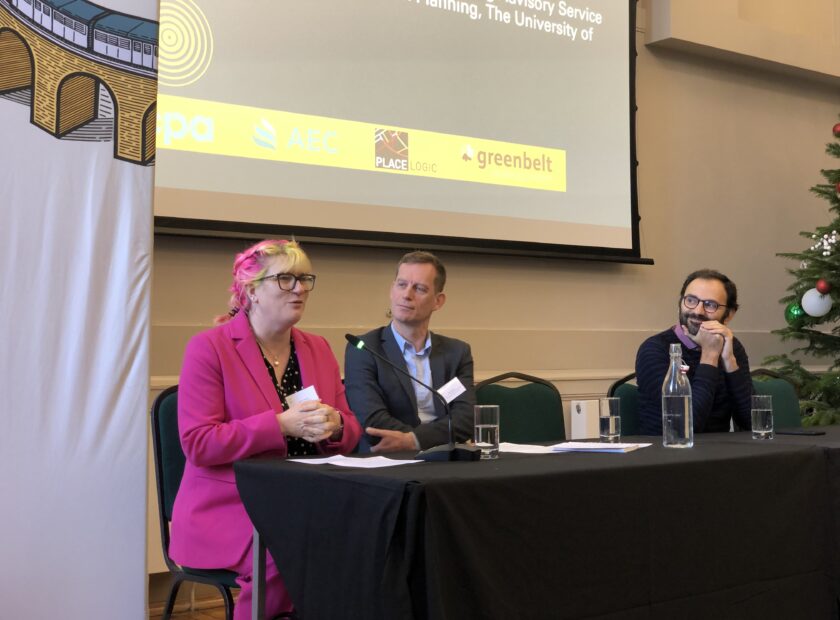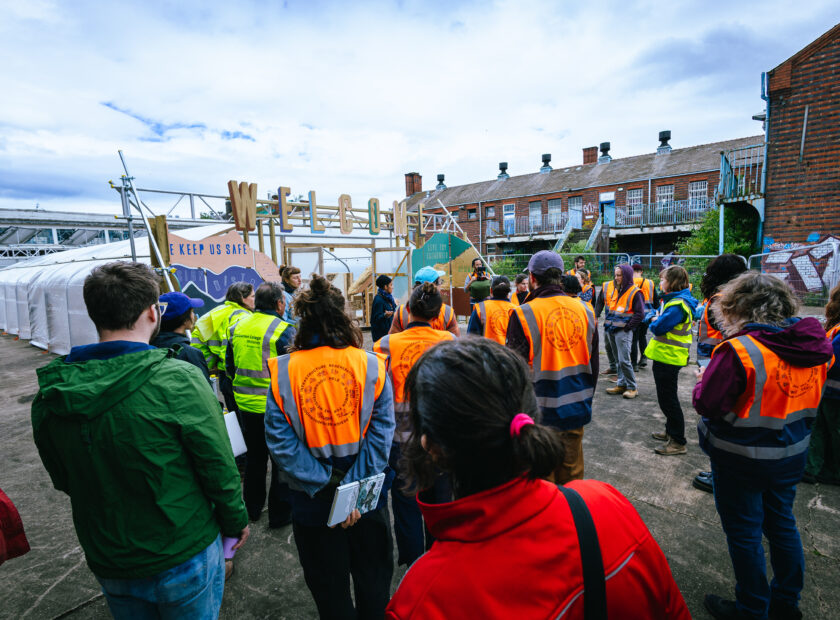Election week is here. By Friday morning we’ll know for sure who will be in the driving seat for housing delivery and planning reform. With a lot of pre-election talk about New Towns and Garden Cities, the question is – will a new government seize the opportunity to provide a sustainable future for the nation?
The day before that rainy day election call, Angela Rayner shared the Labour Party’s vision for housing delivery, including ‘a new generation of New Towns’. The speech made reference to the Garden City Project, to standards in the form of a ‘New Towns Code’, and to a task force to start work on locations and deliver their findings within six months. The Liberal Democrat Party meanwhile has committed to enabling ‘10 new Garden Cities’ should they be the next Government. These are commitments both parties reinforced in their published manifestoes. While the Conservative’s manifesto was quiet on new settlements, their programme of ‘Garden Communities’, and consultation on Development Corporations was still live as Parliament was dissolved. The role of new settlements in tackling the housing crisis looks here to stay.
A new generation of new settlements provides the opportunity to create healthy, climate resilient and thriving places. But they will fall at the first hurdle if a new government does not learn the vital lessons from the past on the delivery of new settlements. An approach combining the principles of the Garden City movement with the delivery mechanisms of the New Towns, modernised to be fit for purpose today, would demonstrate these lessons have been learnt.
While there has been some enthusiasm in the sector in response to a positive policy such as New Towns, particularly given the talk of homes for social rent, there has also been concern raised from those who show the record of the New Towns and Garden Cities – from design to delivery – remains widely misunderstood. The TCPA sought to confront this mythology in our Garden Cities Mythbuster, and we explored the issues in detail our book for the RIBA New Towns: Rise, Fall, Rebirth and publication A New Future for New Towns, and more recently in the TCPA’s White Paper for Homes and Communities – ‘Our Shared Future’, which summarises six key lessons from the New Towns. Much of this mythology is linked to people’s experience of unsustainable, car-based sprawling housing estates, which bear no resemblance to the Garden City idea. A new generation of New Towns can represent the antithesis of this approach, but success means heeding the following:
A strong vision for exemplar new places
The post-war New Towns had an ambition for a new future for the nation. The current narrative may be some way off talk of a ‘new kind of citizen’, but a strong vision for the types of places government seeks to create is essential. A clear and shared vision for healthy, resilient and affordable places across England should include clear standards on quality, affordability, climate resilience, community development and long-term stewardship. The Garden City Principles would be a useful place to start. The financial mode presented by the New Towns approach makes it viable.
A strategic and inclusive approach to planning and consent
The New Towns were able to deliver quickly and at speed because Government provided a strong offer and clear national policy. This de-risked investment and provided confidence for locally-led work on locations to be undertaken. Today government must play an equally strong role in site identification. This means commitment to a national spatial plan, and strategic and transparent approach to identifying sustainable locations which will address our climate crises and rebalance the economy beyond the south-east. Planning can be a positive force to assist this. The New Towns programme and more recent projects such as the Eco Towns have shown that people must be empowered to be at the heart of decision-making on new settlements. A new programme must combine community development with a national conversation about the need for new homes and better opportunities to participate in the designation process. This means enabling and supporting local authorities to have the capacity and resources to lead a democratic local process to determine the detail.
Government enabled investment and delivery through modernised New Town Development Corporations
The New Towns programme was seen as a national investment priority. Despite challenges, the £4.75 Billion invested by Government was repaid by 1996, and former Development Corporation land continues to provide an income for HM Treasury. New Towns can be highly profitable, but this relies on strong land value capture tools and up front, but patient, investment and a coherent package of infrastructure investment. An enabling role for Government provides the stability and commitment, to de-risk investment by the private sector alongside public sector finance. The power of the New Towns Act was the combination of site designation and creation of a New Town Development Corporation with the powers to do ‘everything necessary’ to deliver. The Act is still on the statute books and with some minor amendments in relation to climate resilience, public participation and long-term stewardship could be fit for purpose tomorrow.
Management and stewardship
One of the starkest lessons of the New Towns programme was the fatal mistake of abolishing the Development Corporations before their key task of nurturing the development of a place was complete. This betrayal of Lewis Silkin’s vision was exacerbated by the failure to include requirements for stewardship of physical and financial assets in the legislation. This left local authorities without the resources to manage these visionary new places in the long-term. The right stewardship model can provide the resources to pay for and maintain the features that make a place worth living in and can enable a strong sense of community. We only have to look at The Parks Trust in Milton Keynes established by visionary individuals in the dying days of the Development Corporation for a hint of what may have been possible. It is vital that future new towns require a strategy for the long-term stewardship of community assets, their management and resources to benefit citizens over the long term.
Our shared Future, TCPA’s White Paper for Homes and Communities sets out these lessons from the past, the pre-conditions for success, and ten steps to make a new generation of healthy and thriving new communities, a reality, from a work force plan to a new approach to designation.
A programme of large-scale new towns is not a ‘silver bullet’ solution to the housing crisis. We need a portfolio of solutions, which includes unlocking some of our existing local strategic sites and supporting local plan delivery. But history has shown we cannot meet our needs on a plot-by-plot basis alone, and the economies of scale presented by new settlements provide the opportunity to provide exemplar new places. What if we built Europe’s healthiest New Town and became world leaders in sustainable urbanism once again?
As a nation, it’s not a question of whether we build new homes, but how, where, and for what outcome. In 1946, under much harsher economic conditions, we could have chosen slums instead of new towns, but we didn’t. We risked a great deal to try to build the best for ordinary people. A new government means a new opportunity to learn vital lessons from the past and create a meaningful outcome for people and planet. We have all the technical solutions for exemplar new places at our disposal, we just need the political will to make them a reality. We will find out soon if government is brave enough to make it happen.
Banner Image: Roy and Evelyn Guest receive the key to their new home in Washington, 1976. Theirs was the 10,000th home to be built in the New Town. Further details in ‘New Towns: Rise, Fall, Rebirth’ by Katy Lock and Hugh Ellis (RIBA Publishing, 2020)




